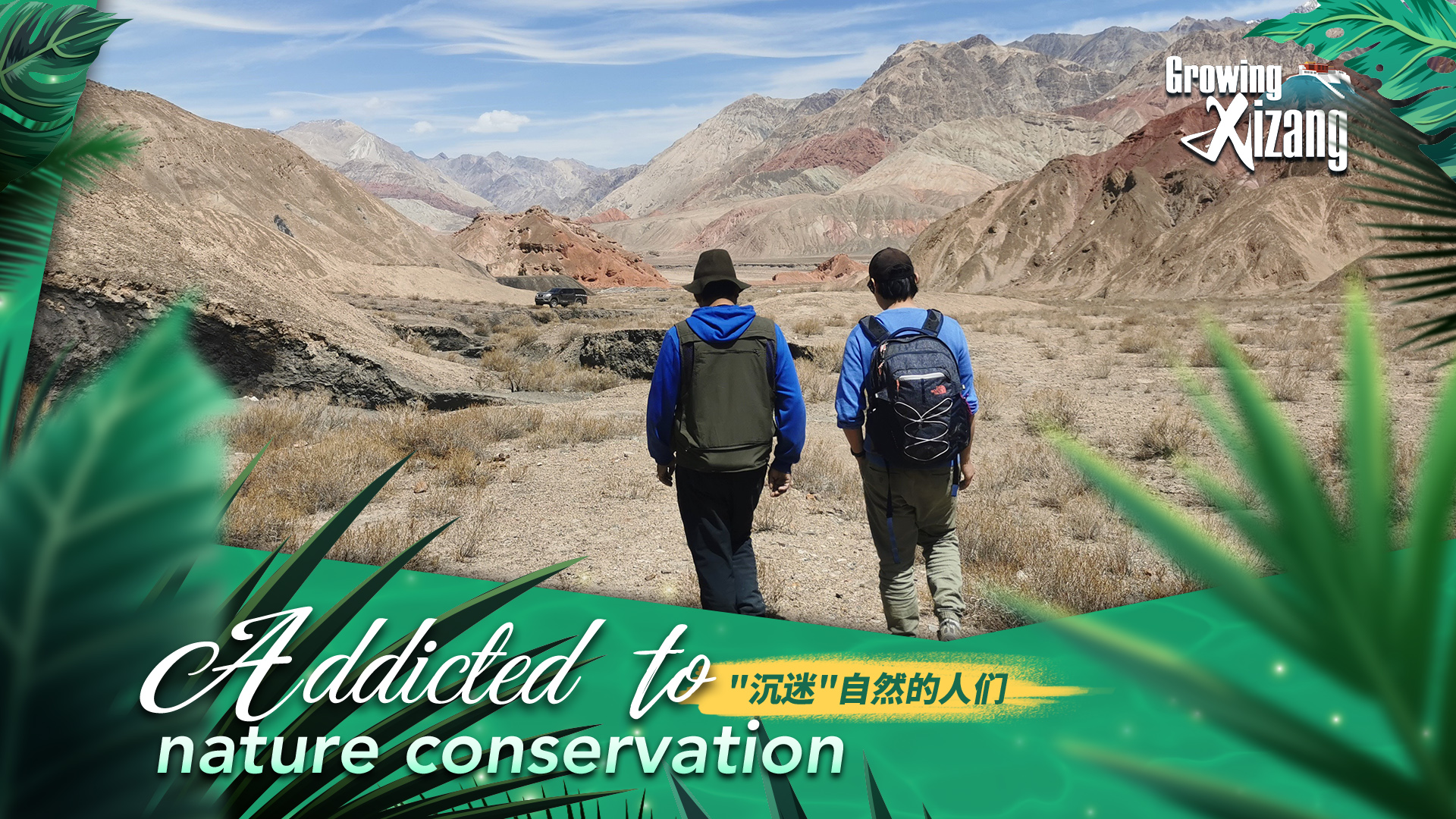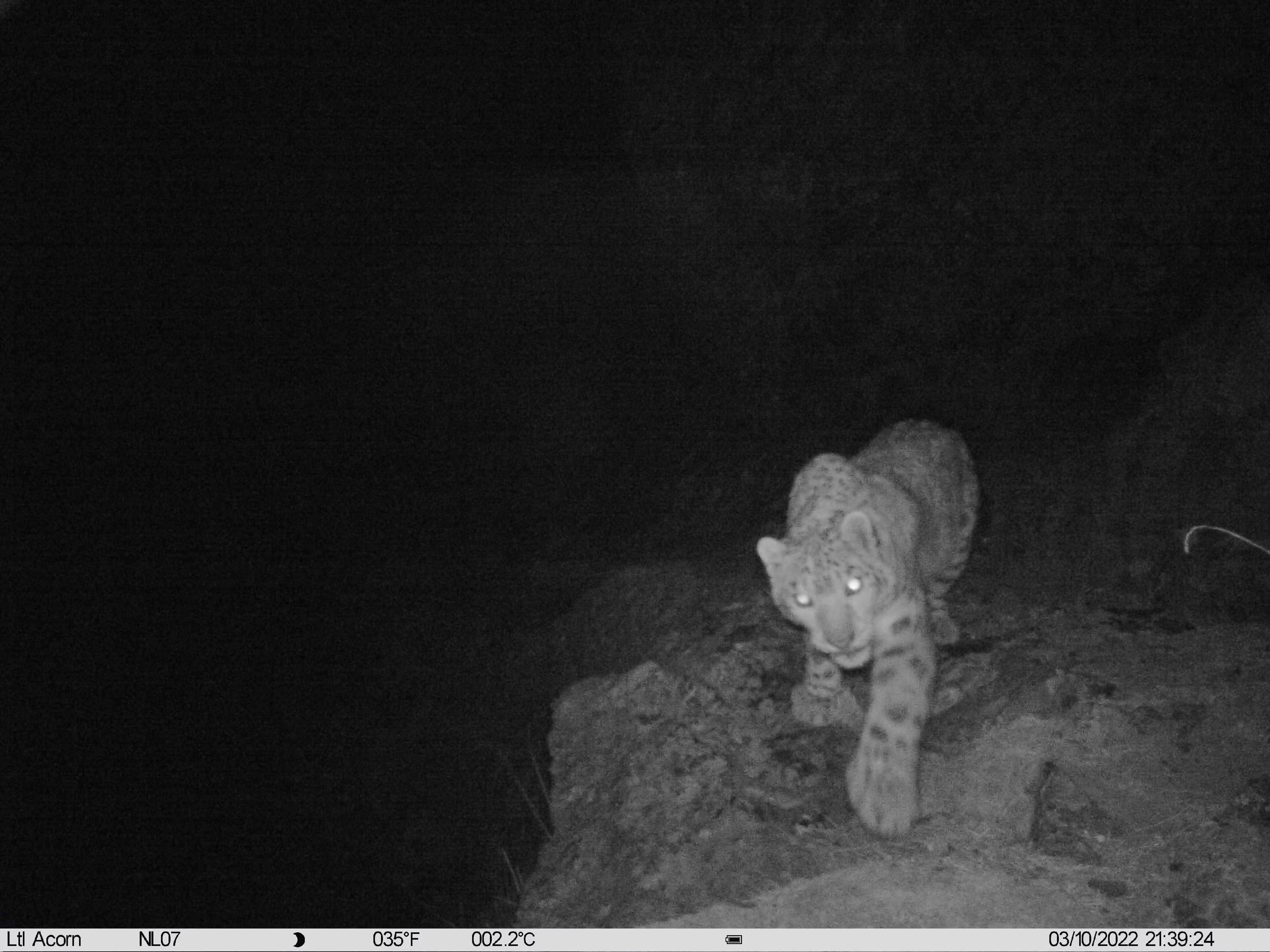At an altitude of 4,200 to 5,200 meters, an investigation team installed 15 infrared cameras in Nenang Valley, Doilungdeqen District, some 50 kilometers from downtown Lhasa, capital of southwest China's Xizang Autonomous Region.
If an animal walks in front of one of these cameras, the sensor triggers the camera and a footage is captured.
In early March 2022, a snow leopard walked pass one of the cameras.
A snow leopard captured by an infrared camera in Nenang Valley, Lhasa, southwest China's Xizang Autonomous Region, March 10, 2022.
Known as the "ghost of the mountains," it was the first time that the endangered species was spotted in Lhasa, making many wonder if the big cat will hit the city streets.
"Seems (the snow leopard) would not do that," said Zhao Xiang from Shanshui Conservation Center. "There is still a certain distance to the streets of Lhasa, and snow leopard is a timid and alert big cat. If it is not in need of rescue or other special circumstances, it won't show up in densely populated areas."
First mini nature reserve in Xizang
The Nenang Valley is a typical alpine valley with high mountain ranges. It shares the same name with the Nenang Monastery, a historical gompa sitting on the middle of the hill.
Since 2021, the local governments and forestry departments have been working with the Peking University and Shanshui Conservation Center to conduct wildlife investigation in Nenang Valley.
"The field survey in Nenang Valley was carried out mainly by members of the Nenang Monastery and the Shanshui Conservation Center as well as herdsmen from the nearby communities," said Zhao, who also joined the research.
Most of the team members were born in 1990s. Young people have brought new energy to the conservation work.

Zhao Xiang, director of Shanshui Conservation Center, a Chinese NGO dedicated to the conservation of species and ecosystems.
Based on data from the infrared cameras and filed studies, they found Nenang Valley to be rich in biodiversity. In addition to the snow leopard, which is under first-class state protection, animals such as lynxes, wolves, red foxes, blue sheep, Eurasian eagle-owls and Tibetan snowcocks can be found in the area.
With support from the Xizang Autonomous Region Forestry and Grass Bureau and departments of Doilungdeqen District as well as the long-term cooperation of the Nenang Monastery and surrounding communities, the first mini nature reserve in Xizang was established in Nenang Valley.
Purposes of the mini nature reserve
As one of the world's most bio-diverse countries, China has developed a nature reserve system with national parks as the mainstay. "It (mini nature reserve) is generally understood as a supplement to national parks, nature reserves and natural parks," said Zhao.
In the book "Chinese Terms in Forest Science," the mini nature reserve or mini reserve is explained as "a small, protected area set aside for the protection of rare and endangered wildlife populations and typical plant communities."
Wuyuan County in northeastern Jiangxi Province began exploring the establishment of mini nature reserve in 1992. Until early 2022, Wuyuan had built 193 mini nature reserves spread over 109,800 hectares.
As the first mini nature reserve in Xizang, Nenang Valley is endowed with rich natural and cultural resources.

A snow leopard walking on its animal trail.
Filming wildlife by infrared cameras
Finding the right place to set up infrared cameras is key to studying wildlife. Zhao told CGTN Nature that they can identify a location by tracing animals' "highways" and "billboards."
Like human beings, animals in the wild usually have their own favorite path which is called "animal trail." If the trail is used by many animals, it works like a "highway."
As wildlife rely on smells to mark their territories or share messages, they may spray urine, leave droppings, or rub scent glands on the ground. And these marks act like a "billboard."
"We choose appropriate animal paths according to our years of investigation experience, and then we look for animal traces, such as feces, digging pits, etc., before installing infrared cameras, so as to increase the possibility of recording wildlife," said Zhao.
About 'Addicted to nature conservation'
Biodiversity, climate change and environment topics are not new, but more and more people have devoted themselves to nature conservation. Some of them are rangers, guarding the forests and protecting local biodiversity; some of them work on desertification control; generations of them spent their lives changing the desert into a green land; some are scientists and researchers, they use the latest knowledge and methods to guide others for a shared future.
Written by: Xing Fangyu
Source: CGTN



